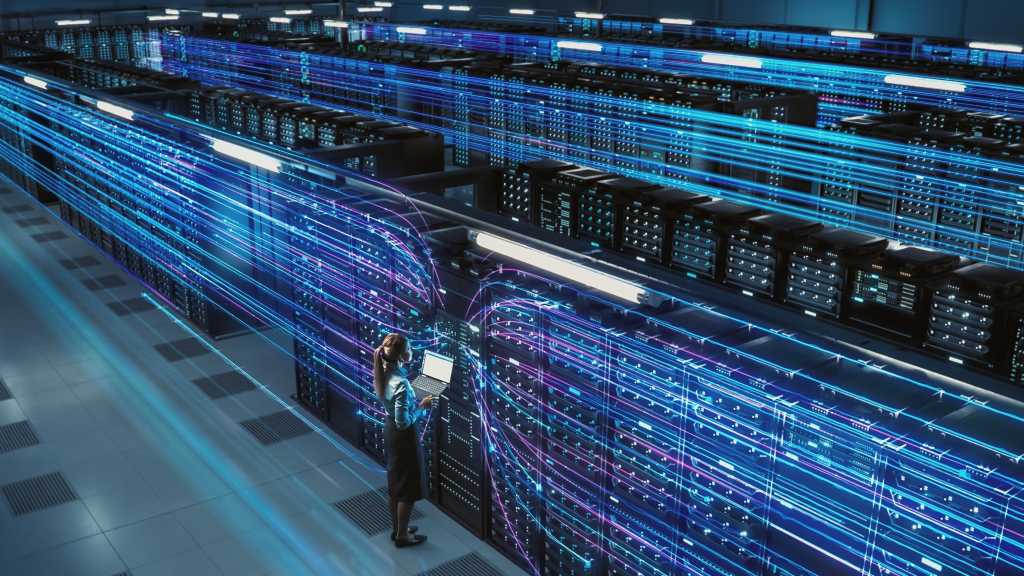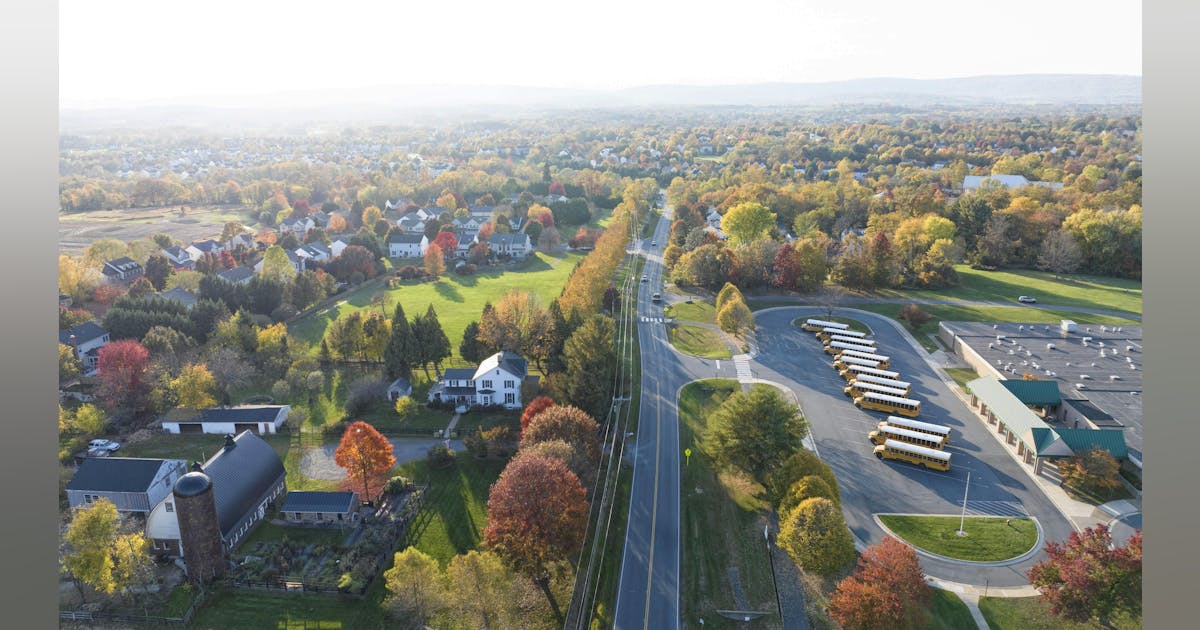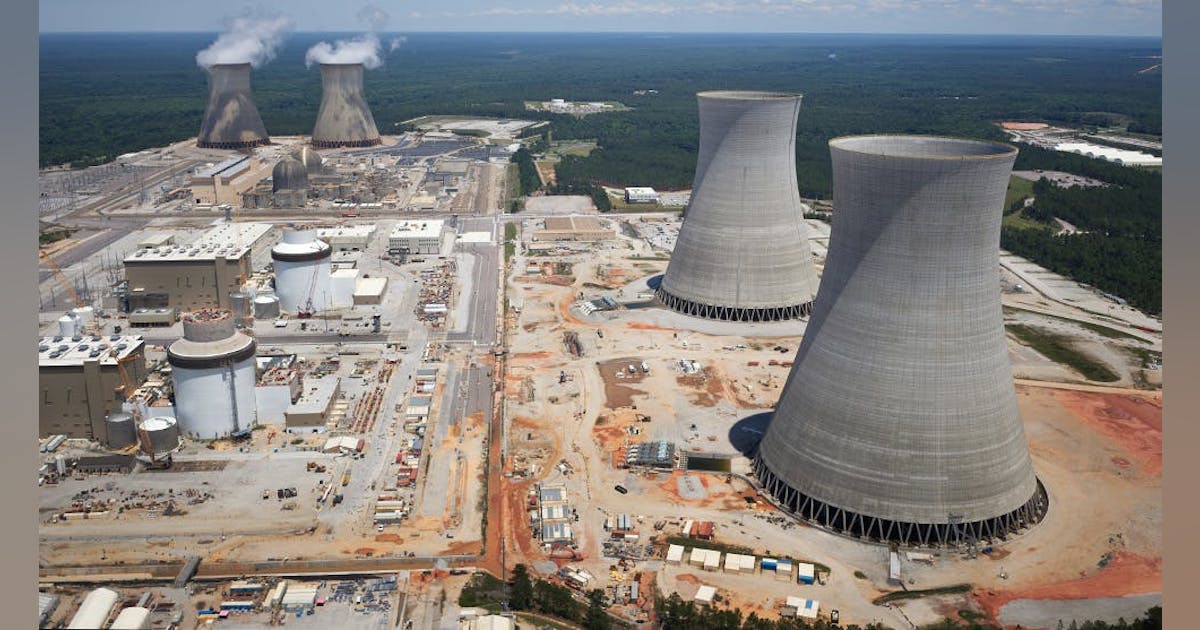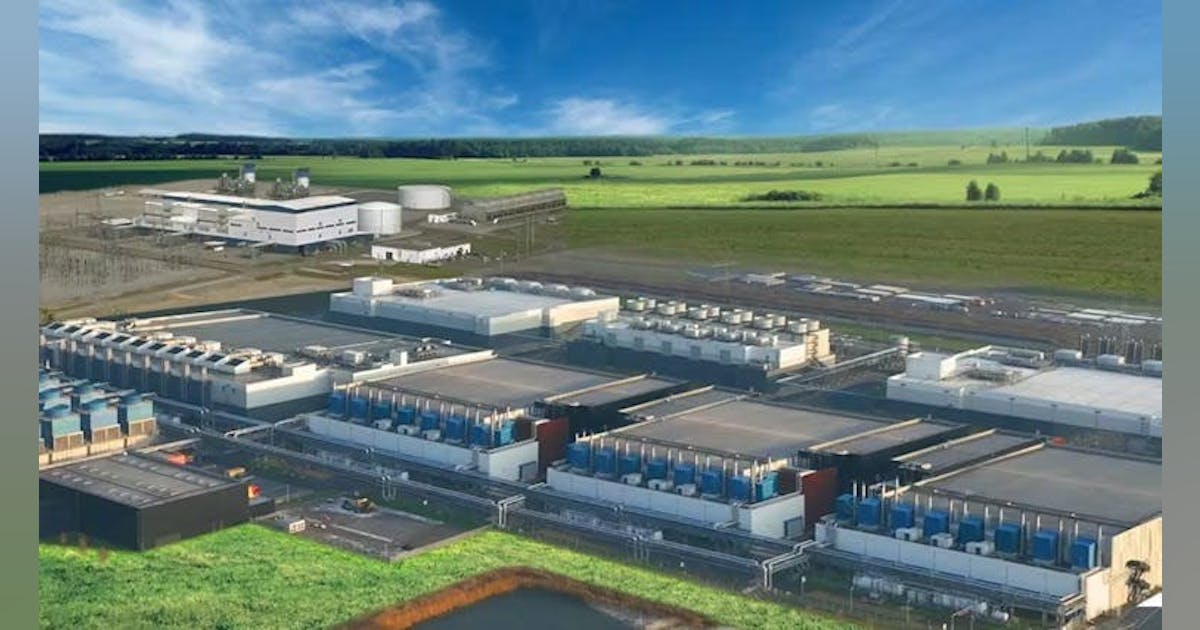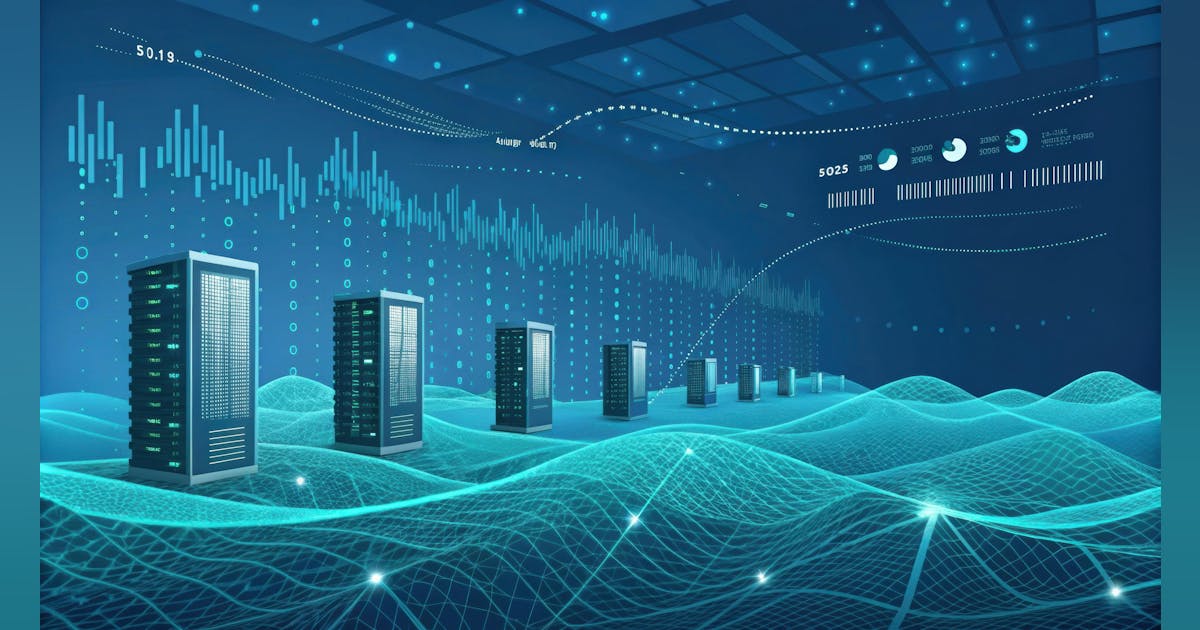
The COVID-19 pandemic catalyzed an unprecedented surge in digital transformation, forcing businesses, educational institutions, and healthcare providers to rapidly adapt to a world where virtually everything had to be online. Suddenly, an industry that used to be invisible now found itself prominently in the spotlight.
When data centers were deemed “essential infrastructure” during the COVID shutdowns under the first Trump administration, many of us felt a small amount of pride for having been remembered but also felt the gravity of the situation. The stakes were high, and our infrastructure was being put to its toughest test ever: reliable uptime for all of society must be maintained.
This seismic shift to remote work and virtual interactions placed immense pressure on data center infrastructure, pushing it to the forefront of global attention. As social distancing measures took effect, data centers became the backbone supporting increased internet traffic, offering collaborative software for businesses, schools, healthcare institutions, digital retailers, and more, all the while maintaining data security. Let’s not leave out the impact to entertainment resources such as online gaming or forget the day we thought Netflix would actually break the internet.1
The impact of the pandemic on digital infrastructure2 is worth noting a few celebratory statistics:
1. Education: With 1.2 billion children out of classrooms, e-learning platforms saw massive growth as Google Classroom and Zoom calls took the place of traditional educational methods.
2. Healthcare: Telemedicine usage exploded as in-person doctor appointments became restricted, with some providers reporting increases of up to 158% in app usage.
3. Business: Companies needed to accelerate their digital transformation efforts as well as support remote employees, compressing years of strategic goals into mere months.
4. Entertainment: Online gaming surged, with Xbox Live reaching a record 90 million monthly active users during quarantine.
The dramatic spike in the utilization of server compute, storage, and network resources, brought about a sudden and intense reliance on digital infrastructure to maintain societal functions during a global crisis. The industry’s ability to scale rapidly and meet the exponential growth in demand demonstrated our incredible preparation and resilience as we continued to support the digital world, and this could not remain unnoticed by society.
Connecting the Unconnected
As a fallout to the pandemic, eyes were opened to the plight of underserved markets. Before the pandemic, only 72% of rural residents had moderate- or high-speed broadband available in their census blocks, compared to over 90% of the general U.S. population.3
In rural areas, children were left behind in completing educational requirements, struggling due to a lack of internet access. The digital divide became glaringly apparent, with rural districts significantly less likely to expect teachers to provide instruction, take attendance, or monitor student progress compared to their urban counterparts.4
The Biden-Harris administration recognized the need to build digital infrastructure, taking necessary steps to address this issue through the Broadband Equity, Access, and Deployment (BEAD) program, a cornerstone of their “Internet for All” initiative. The BEAD program, authorized by President Biden’s Bipartisan Infrastructure Law, allocated $42.45 billion for high-speed internet infrastructure deployment to deploy or upgrade broadband networks. This historic investment aimed to ensure that everyone in America had access to affordable, reliable high-speed internet service. States were enabled to administer the grant program within their borders using the allocated funds, and substantial funding to this endeavor occurred: New Mexico received over $675 million, Virginia over $1.4 billion4, and New Jersey over $263 million5 in BEAD funds.
Funding Is Not the Same As Deployment
The BEAD program, while ambitious in its goals, has faced criticism for its perceived lack of progress. However, there are several important considerations that explain the challenges in turning funding into actual broadband deployment.
1. The BEAD program primarily focuses on “last-mile” fiber deployments, which connect end-users to the broader network. However, this approach overlooks a crucial component: middle-mile infrastructure has to come first. You can’t build the last mile until the middle mile has also been put into place, as it provides the necessary connection to the broader network. This incomplete foundation would have rendered the last-mile deployments isolated and ineffective, much like building new power generation without transmission lines to distribute the electricity. A later solution from the Biden-Harris administration recognized this challenge and in 2023, announced $930 million to further build middle-mile connectivity.6
2. Grants available had limited coverage, typically meeting no more than 50% of each awarded deployment.7 The high cost of fiber deployment is prohibitive, with the average cost reaching $27,000 per mile, potentially much higher in challenging terrain.8 Companies awarded grants would therefore still need to secure substantial additional funding to complete their projects. Finding these investors is a challenge because, unlike data centers, fiber deployments offer no tangible assets to reclaim in case of default, making it a high-risk investment for potential backers.
3. Even with funding secured, fiber deployment faces challenges with right-of-way issues. Obtaining easements and right-of-way access across miles of residential and local communities can face significant pushback. Moreover, the distance required for rural areas is made more complex (and less profitable) due to low population density, vast distances between premises, and varying topography. When all that is said and done, there’s always the process and timeline for obtaining permits.
While the BEAD program has allocated significant funding, the path from funding to actual deployment is fraught with challenges that must be addressed to achieve the goal for expanding access and Internet for All. But kudos to the Administration for recognizing the need and putting a program in place to lend their support and advocate for digital connectivity.
AI Entered the Scene at Full Throttle
There is no other way to look at it: the introduction of generative AI completely rewrote the rules.
The advent of generative AI in late 2022 and early 2023 dramatically accelerated the need for robust digital infrastructure and comprehensive regulatory frameworks. With this large of a technological and societal shift in such a short period of time, regulatory bodies were bound to act swiftly to determine how their jurisdictions would adopt and respond.
President Biden’s administration acknowledged the rapidly evolving landscape with a series of initiatives aimed at both harnessing AI’s potential and mitigating its risks.
March 2024: OMB AI Governance Policy9
AI became a portion of the federal budget, which jointly recognized society’s apprehension, but also the capabilities of the technology. The Office of Management and Budget (OMB) released a 34-page memo detailing AI governance policies for federal agencies. Key aspects included:
· Establishing guardrails for AI uses that could impact Americans’ rights or safety
· Expanding agency requirements for AI use case inventories
· Mandating the designation of Chief AI Officers (CAIOs) in federal agencies
Summer 2024: National AI Talent Surge10
The administration announced plans to hire at least 100 AI professionals into government positions by summer 2024.
October 2024: National Security Memorandum on AI11
President Biden issued the first-ever national security memorandum on artificial intelligence, building upon the comprehensive approach to AI governance established in his executive order. This memo:
· Directed U.S. government agencies to implement AI technologies for national security missions, aiming to maintain the country’s competitive edge.
· Formally chartered the AI Safety Institute within the Department of Commerce, designating it as the primary point of contact for U.S. industry on AI matters.
· Called for strengthening chip supply chains and securing AI inventions, recognizing the need to protect U.S. technological advantages.
· Provided guidance on AI governance and risk management in national security contexts, including prohibitions on certain AI uses such as unlawfully suppressing free speech or removing human oversight in critical nuclear weapons decisions.
· Emphasized the importance of shaping international norms around AI use to reflect democratic values.
Ongoing Initiatives
· The administration has been working on international consensus-building around AI, including G7 documents and UN resolutions.
· OMB plans to take action on federal procurement of AI later in the year.
· The government is continuously updating its approach to address novel legal and ethical issues as they arise in AI development and deployment.
These initiatives collectively demonstrate the Biden administration’s commitment to establishing a comprehensive regulatory framework for AI while simultaneously promoting its responsible adoption across government agencies. The focus has been on balancing innovation with safety, security, and ethical considerations, positioning the United States as a leader in AI governance on the global stage.
2025 Launched Bipartisan Announcements in the Pre-Inauguration Term
Biden’s Final AI Initiative12
President Biden’s final major AI initiative before leaving office was a strategic executive order addressing the rapidly growing energy needs of advanced AI data centers. Signed on January 14, 2025, the order directs the Department of Defense and Department of Energy to identify at least three federal sites for private sector AI data center development for hosting gigawatt-scale, new clean power facilities. The administration’s projections indicate that leading AI developers will require data centers with up to five gigawatts of capacity for training AI models by 2028, exacerbating the critical infrastructure challenges facing the technology sector.
At first glance, by emphasizing support of the development of AI infrastructure within the United States, the executive order aims to maintain national technological leadership while addressing potential national security concerns. Likewise, an order mandating that companies utilizing federal lands for AI data centers purchase American-made semiconductors and integrate clean energy sources, embraces values of both the “Buy American” as well as climate conscious persuasions, reflecting a balanced approach to supporting domestic technological innovation.
However, this move raises complex questions about the relationship between government and private tech companies. While the initiative aims to bolster U.S. leadership in AI and address critical infrastructure needs, it also presents potential concerns, potentially raising security concerns about sensitive data and technologies being developed on government property. The mandate for clean energy use in these facilities demonstrates the administration’s commitment to environmental goals, but it also raises questions about the extent of government influence over private sector operations. Perhaps the best solution to many data center constraints is found by respecting the delicate balance between fostering innovation, maintaining national security, pursuing clean energy objectives, while also permitting valuable government real estate to be leveraged for economic gain.
Nevertheless, the initiative reinforces the government’s efforts toward a sophisticated attempt to balance economic competitiveness, AI safety, and strategic infrastructure development, positioning the United States at the forefront of the global AI transformation.
President-Elect Trump’s First Data Center Initiatives13: DAMAC and Stargate
DAMAC’s U.S. Data Center Surge
President-elect Donald Trump’s announcement of a $20 billion investment in U.S. data centers by DAMAC Properties, an Emirati company led by billionaire Hussain Sajwani, marks another significant development in the tech infrastructure landscape. This investment, revealed on January 7, 2025, is positioned as a testament to Trump’s ability to attract substantial foreign capital for large-scale projects in the United States.
Sajwani, a long-time business associate of the Trump family, cited the recent election as a key motivator for this commitment, which aligns with the growing demand for data center capacity driven by advancements in artificial intelligence, cryptocurrency, and the broader digital economy. DAMAC has stated that the Edgnex expansion plan will focus on sunbelt states, specifically Texas, Arizona, Oklahoma, and Louisiana, and midwest states, such as Ohio, Illinois, Michigan, and Indiana; their plans are to build data centers with a capacity of 2000MW over the next four years.14 Notably, United Arab Emirates (UAE) power sources lean heavily on natural gas and solar power; we may expect to see DAMAC’s Edgnex implement the same here.
“Covid has been a major factor in bringing about a world of change. It has meant a faster move for everyone towards digital economies. When everything gets done on the phone, there is a need to increase the data space,” said Sajwani.14
This foreign investment in the US is worthy of some analysis. With the post-pandemic acceleration of demand for data center infrastructure, it is no surprise that commercial real estate developers and investors the world around are seeking to diversify and amplify their interests. Saudi and Emirati investments in U.S. data center infrastructure represent a significant shift in strategy for Middle Eastern investors, reflecting the growing importance of data as a commodity in the global economy. Nabeel Mahmood, a futurist and financial expert, offers valuable insights into this trend.
Mahmood points out that Middle Eastern countries, having long relied on oil and gas revenues, are now diversifying their investments to maintain their quality of life. They recognize data as the “commodity of the future,” an endless resource unlike finite fossil fuels. This shift is evident in their investment portfolios, which have expanded from traditional sectors like sports, utilities, and real estate to include digital infrastructure.
Noting that initial investments in tech companies like Apple have yielded significant dividends, this has encouraged further investment in the data sector. Mahmood predicts that over the next 2-3 years, Middle Eastern investors will become some of the largest influencers in digital infrastructure growth and investment. He adds:
“Over the next presidential term, we could see one of the largest capital infusions into digital infrastructure, with Middle Eastern investors potentially making 40% of total investments. This influx is expected to be distributed across four key categories: 5G networks, cloud computing, data centers, and artificial intelligence. The projected allocation over the next four years suggests approximately 20% for 5G network infrastructure, 30-35% for cloud computing, 30% for AI technologies, with the remainder split between data centers and physical layer infrastructure.”
From a physical infrastructure perspective, data centers align well with traditional Middle Eastern investment strategies that value land as a primary asset. Unlike the dot-com burst, Mahmood believes the current tech investment landscape is more stable. The infrastructure is now in place, and there’s widespread acceptance of connectivity and reliance on technology. This validation from a consumption perspective mitigates some of the risks associated with these investments.
As major tech firms expand their presence in the Middle East’s data center and cloud computing space, we can expect to see a reciprocal increase in Middle Eastern investments in U.S. digital infrastructure, reflecting the global nature of the digital economy.
Lingering Debates on Foreign Investment Will Impact the Digital Economy
With his earlier announcement in mind, foreign investment is poised to significantly impact the digital economy as the Trump administration begins its second term. However, President-elect Trump’s “America First” approach has been frequently highlighted during both his campaigns and is expected to reshape policies on foreign ownership of U.S. assets. While the January 2025 announcement seems to have his full blessing, there are nevertheless implications to foreign investment extending beyond traditional sectors and into to the rapidly growing digital infrastructure.
Both recent administrations’ focus on protecting U.S. technological development, especially in artificial intelligence and semiconductor industries, is quite likely to result in increased scrutiny of foreign investments in these areas over the long term. This aligns with the broader trend of strengthening national security measures, including potential reforms to the Committee on Foreign Investment in the United States (CFIUS) and the implementation of stricter outbound investment controls.
Concerns about foreign ownership extend to natural resources, as exemplified by the ongoing debate over foreign purchase of farmland and water rights. In Arizona, for instance, tensions have arisen due to foreign companies acquiring land and water resources for agricultural purposes, raising questions about resource depletion and export.15 This issue highlights the broader concern about foreign control over critical U.S. resources and commodities.
As data increasingly becomes recognized as a valuable commodity, it’s likely that the Trump administration, or possibly subsequent administrations, will extend protectionist policies to the digital realm. This could lead to federally mandated limits on foreign ownership or control of U.S. digital infrastructure, similar to the caps being considered for land acquisition. Such measures would aim to safeguard national interests and prevent excessive foreign influence over critical digital assets.
Foreign ownership of data centers raises other questions on data sovereignty and regulations like GDPR, which have significant implications for global data management and cross-border data flows. While the principle that data should be subject to the laws of its country of origin is gaining traction, there’s a growing need for a more globalized approach to data governance because of this foreign investment. The challenge lies in establishing a unified regulatory framework that respects individual nations’ sovereignty while facilitating necessary data transfers for global business operations to create standardized rules and oversight mechanisms that can balance national interests with the needs of a globally connected digital economy.
The evolving landscape suggests that foreign investors, particularly from countries like Saudi Arabia, may need to adapt their strategies, potentially opting for minority stakes in U.S. ventures to navigate these new restrictions. As the digital economy continues to grow, the balance between attracting foreign investment and protecting national interests will remain a critical challenge for policymakers.
The Stargate Project
Fast-forward to this week, on Jan. 21 OpenAI unveiled an ambitious initiative called the Stargate Project, a groundbreaking $500 billion investment in artificial intelligence (AI) data centers aimed at solidifying the United States’ position as a global leader in AI innovation. This monumental project, supported by key partnerships with SoftBank, Oracle, MGX, Arm, Microsoft, and NVIDIA, is set to redefine the landscape of AI infrastructure while delivering profound economic and strategic benefits.
The Stargate Project, a joint venture spearheaded by OpenAI and SoftBank, will deploy its initial $100 billion immediately, with the remaining $400 billion planned over the next four years. SoftBank, led by Chairman Masayoshi Son, will provide financial leadership, while OpenAI will oversee operations. This unparalleled investment underscores the project’s mission to bolster America’s AI capabilities, generate hundreds of thousands of jobs, and drive economic revitalization. OpenAI’s CEO Sam Altman described Stargate as “the most important project of this era.”
Infrastructure and Economic Impact
The Stargate Project has already commenced its infrastructure buildout in Texas, with Oracle’s site in Abilene serving as a key initial hub. The facility, apparently leased from Crusoe, is reportedly constructing 10 data centers on-site, with additional campuses being evaluated nationwide. These data centers, designed exclusively for OpenAI’s operations, will support the rapid expansion of its generative AI compute portfolio and enable the training of cutting-edge models to advance artificial general intelligence (AGI).
This project promises to inject significant momentum into the digital infrastructure ecosystem. OpenAI has expressed its intention to collaborate with firms across all facets of data center development, including land acquisition, power generation, construction, and equipment manufacturing. “We want to connect with firms across the built data center infrastructure landscape, from power and land to construction to equipment, and everything in between,” the company stated.
Strategic Partnerships
Stargate’s success hinges on its collaboration with some of the tech industry’s most prominent players. Arm, Microsoft, NVIDIA, Oracle, and OpenAI are among the key technology partners driving this initiative.
The project builds on a long-standing partnership between OpenAI and NVIDIA, which began in 2016, and an evolving collaboration with Oracle to build and operate the project’s AI computing systems. Microsoft’s Azure cloud platform will also play a pivotal role, with OpenAI continuing to expand its usage of Azure to support its ambitious computational requirements.
National Security and Global Leadership
Beyond its technological aspirations, the Stargate Project has significant geopolitical implications. By advancing American leadership in AI, Stargate aims to provide strategic capabilities to safeguard national security and maintain an edge over global competitors such as China.
The project’s scale and urgency have drawn support from policymakers, including President Trump, who emphasized the importance of keeping AI innovation within the U.S. “We’re making it possible for them to get this production done easily, at their own plants if they want,” he stated during a White House press conference announcing the initiative.
OpenAI’s vision for Stargate extends beyond economic and strategic objectives. The organization’s commitment to AGI development remains rooted in the belief that AI can elevate humanity. “This step is critical on the path to figuring out how to use AI to benefit all of humanity,” OpenAI affirmed.
Looking Ahead
While specific technical details about Stargate’s planned facilities remain under wraps, past proposals from OpenAI suggest the potential for massive 5 GW data centers—facilities that would rank among the largest in the world. As the Stargate Project advances, its impact on the data center industry, AI research, and global technology leadership will undoubtedly be profound.
In an era where AI is reshaping economies and societies, the Stargate Project stands as a testament to the transformative potential of bold investments and visionary collaboration. For stakeholders across the digital infrastructure landscape, Stargate represents not only an opportunity to participate in a historic undertaking but also a chance to shape the future of AI and its role in serving humanity.
Implications of U.S. Presidential Support for Data Centers to Our Industry
Investment
The data center industry continues to experiencing unprecedented growth and investment, with projections indicating a phenomenal expansion in 2025 and beyond. JLL’s 2025 Global Data Center Outlook forecasts a baseline 15% CAGR for the global data center market through 2027, with potential to reach 20%.
President-elect Trump’s announcement of a $20 billion investment by DAMAC Properties is significant, as is President Biden’s DOD and DOE land reuse for AI data centers, it’s important to contextualize these within the broader industry landscape. Blackstone estimates a total of $1 trillion in domestic investment over the next five years.16 These commitments are substantial, marquee moments in our industry, certainly. But in light of broader investment, they risk being seen as relatively insignificant in the grand scheme of data center investments, representing a small fraction of the anticipated need. From an operator’s perspective, $20 billion isn’t much more than seed money, and six sites close to transmission lines makes barely a ripple in the infrastructure need to support AI. We will need much more support to truly move the needle (cue: The Stargate Project).
While government support and advocacy for data center investments are generally positive, it’s crucial to maintain an objective perspective on the actual impact of individual announcements. It highlights the fact that many politicians truly do not understand how much is being invested in digital infrastructure every year and that even larger game-changing investment is needed to support the rapidly evolving and accelerating developments. Let’s acknowledge that we’ve communicated the essential services we offer, but not our financial scale; we need to communicate our value by both standards.
Not In My Back Yard
NIMBYism has become an increasingly significant challenge for the data center industry as its visibility and impact on local communities grow. The rapid expansion of data centers, driven by the insatiable demand for digital services and AI, has led to a surge in community opposition.
With more awareness from the pandemic and AI applications comes heightened scrutiny. Data center developers can no longer rely on the industry’s previous relative anonymity. The early “wild west” approach to construction and operation is naturally untenable as communities raise concerns about resource consumption, environmental impact, and changes to local landscapes.
To address these challenges, data center operators must prioritize community engagement and transparency. This includes implementing strategic public engagement plans early in the project lifecycle, clearly defining project benefits, and proactively addressing community concerns. Additionally, the industry should expect and prepare for mandated assessments and certifications to demonstrate compliance with environmental and community standards.
As the data center boom continues, companies must adapt their approach to site selection and development, considering not just technical requirements but also community impact and sustainability. This shift towards being a “good neighbor” will be crucial for the industry’s continued growth and acceptance in local communities.
Sustainability and Regulation
It’s high time for data center operators to face the music: the industry’s days of operating in relative obscurity are over. With increased visibility comes heightened responsibility, and the spotlight is now squarely on our power and water consumption. We can no longer afford to treat sustainability as a mere checkbox or PR exercise.
The reality is stark: our industry’s energy appetite is voracious and growing. As AI and cloud services explode, so does our power demand. We’re no longer just a blip on the grid—in many markets, we’re becoming a major strain. Water usage, particularly in cooling systems, is another Achilles’ heel that’s drawing increasing scrutiny.
The Biden administration’s focus on clean power for data centers is just the beginning. We should more stringent regulations on energy efficiency, water conservation, and overall environmental impact. This isn’t just about appeasing environmentalists or ticking regulatory boxes. It’s about securing our industry’s future.
Communities are pushing back, utilities are struggling to keep up, and regulators are sharpening their pencils. If we don’t proactively address these concerns, we risk facing operational constraints, increased costs, and potential roadblocks to expansion. It’s on us to get ahead of the curve, innovating and implementing truly sustainable solutions before they’re mandated.
This is our wake-up call. It’s time to stop treating sustainability as an afterthought and start baking it into every aspect of our operations. The data center operators who thrive in this new era will be those who embrace this challenge head-on, turning sustainability into a competitive advantage.
Charting New Waters
The data center industry stands at a pivotal moment of unprecedented growth and recognition. From massive investments to government acknowledgment of our critical infrastructure, we are witnessing a transformative period that validates the essential nature of our services. The convergence of artificial intelligence, cloud computing, and digital transformation has positioned data centers as the backbone of modern technological progress.
Our industry has moved from the shadows of corporate infrastructure to the forefront of global economic and technological innovation. The investments we’re seeing – from private ventures to government-backed initiatives – reflect a broader understanding that data centers are no longer just support systems, but fundamental drivers of economic and technological advancement.
During his first term, President Trump prioritized American leadership in cutting-edge technologies, including artificial intelligence, quantum information science, and 5G communications.17 Trump’s return to the White House promises a robust commitment to digital infrastructure and technological advancement. His administration’s approach is characterized by pro-business policies and a focus on American technological leadership, and we should expect to see further unprecedented support for the data center and digital technology sectors. Let us look to this incoming administration with hope for policies that accelerate infrastructure development, reduce regulatory barriers, and position the United States at the forefront of global digital innovation.
As we look forward, the opportunities are boundless. The recognition of our industry’s critical role, the increasing investments, and the growing demand for computational power all signal a future of continued growth and significance. We should approach this moment with optimism, strategic vision, and a commitment to continuing our role as the not-so-silent enablers of the digital revolution.
References:
1. https://www.nasdaq.com/articles/will-netflix-break-the-internet-2020-03-21
3. https://files.eric.ed.gov/fulltext/ED628332.pdf
8. https://info.aldensys.com/joint-use/3-challenges-of-fiber-deployment-and-how-to-improve-the-process
9. https://fedscoop.com/white-house-unveils-ai-governance-policy/
10. https://ai.gov/wp-content/uploads/2024/04/AI-Talent-Surge-Progress-Report.pdf
11. https://therecord.media/biden-administration-artificial-intelligence-nsm
17. https://trumpwhitehouse.archives.gov/issues/infrastructure-technology/











